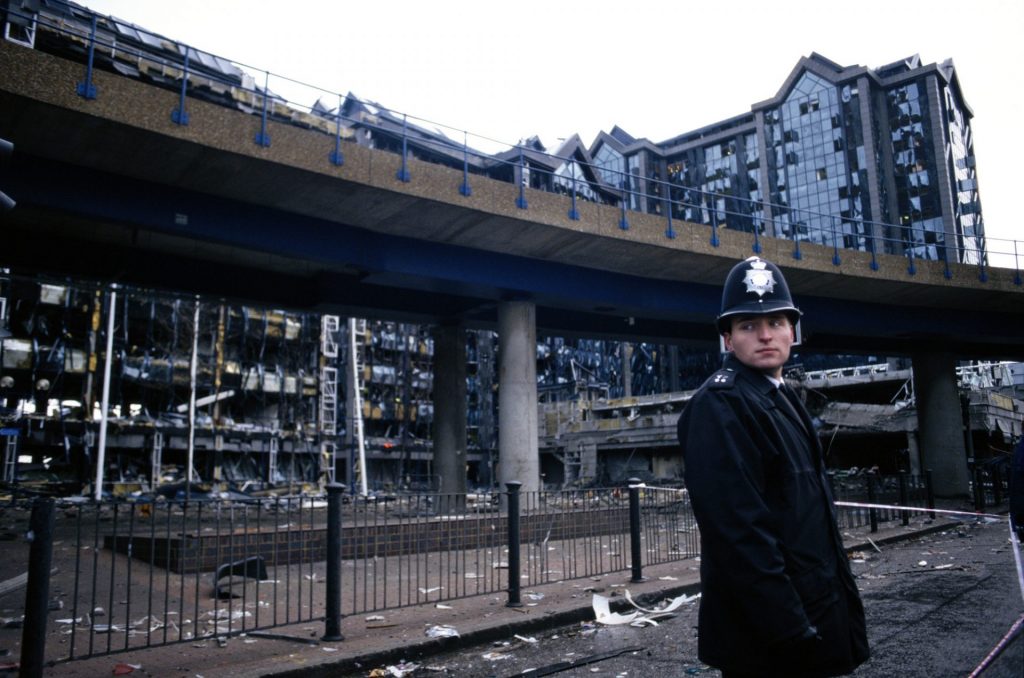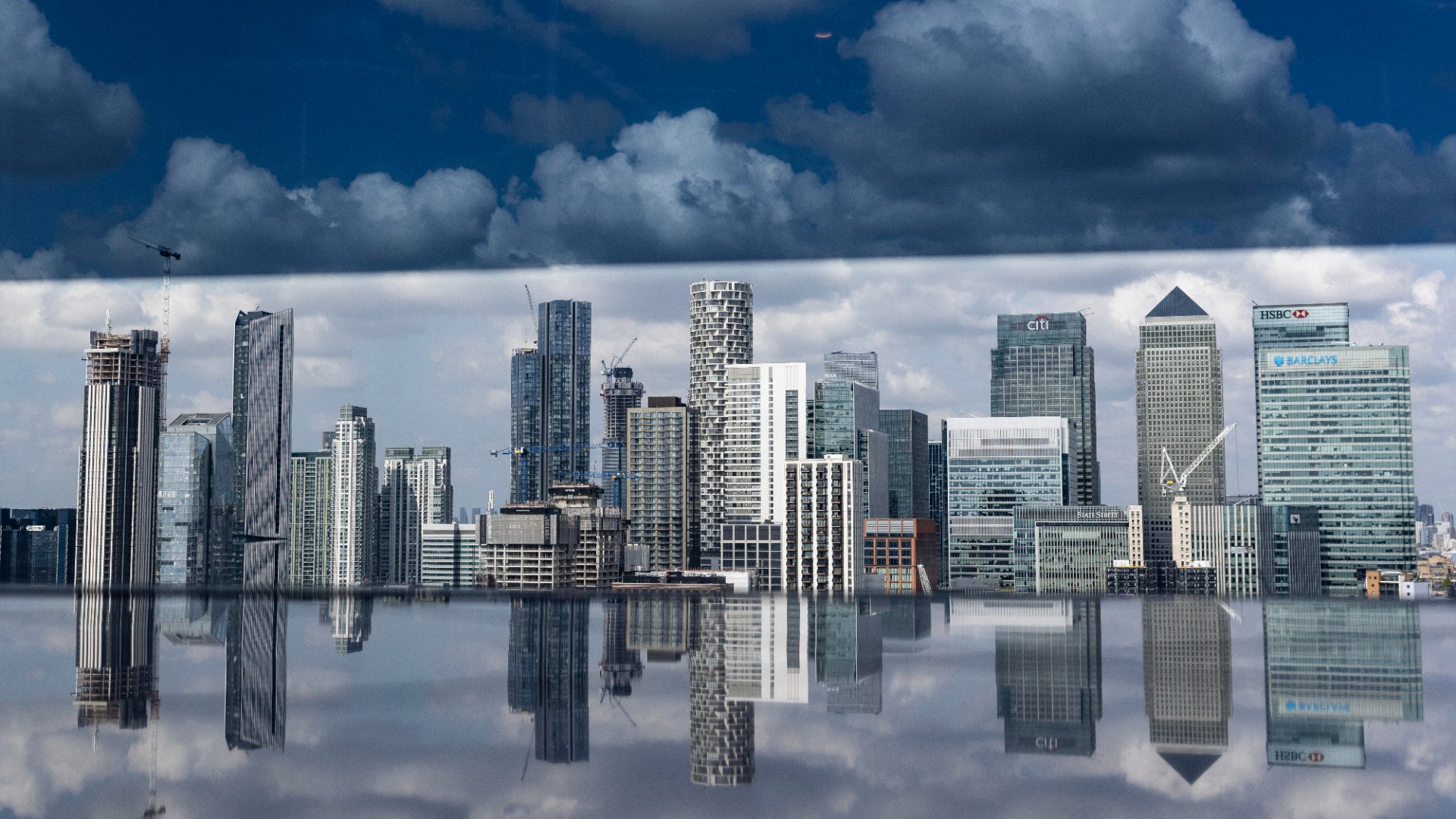Siddiqa Islam grew up watching Canary Wharf rise from the docks of the River Thames. In 1995, when One Canada Square was still the tallest building in England, she visited it on a school trip. As a child of a Tower Hamlets council estate, she didn’t know what to make of it. “At the beginning it was a place we just didn’t go to,” she says. “It was full of suits.”
Then came the IRA bomb, in 1996. She was at school when she heard it detonate, and the security measures around the Docklands area that followed made Siddiqa and her friends feel even less welcome in this growing monument to late 20th-century commerce.
By the late 1990s, her friends began to take weekend jobs in the shopping centres that grew up on the site. On Saturdays, groups of local teens would come to hang out in the spaces bankers had left deserted. “They were my formative years,” she remembers, with mixed feelings. “I still didn’t really think I belonged in those towers.”
Between 1993 and 2013 the number of workers employed in Docklands grew from 7,000 to more than 100,000, and by the mid-2010s more than 16 million square feet of office and retail space had been constructed. Large housing schemes also sprang up across the old dockland areas, though most of these became dormitory or investment apartments.
Meanwhile, Islam had built a successful career in local government, most recently as director of regeneration for Tower Hamlets. While working on estate-regeneration programmes on the Isle of Dogs, she encountered rising resentment among residents that this huge commercial district “had been plonked on their doorstep and made their ability to buy and live in the space more difficult”. Mega money was being made, but it wasn’t helping the 41% of local people who were living in poverty. In 2013, figures from the Office for National Statistics showed that barely one in 10 of the workers in Canary Wharf was local.
Then, three crises in succession: the 2008 financial crash, followed by Brexit – together causing massive redundancies and pushing some businesses back into the City of London – and then the Covid pandemic, which temporarily closed the space to business altogether.


The estate now has a vacancy rate of nearly 17%, up from just 4% in 2017. Footfall is starting to return to the area – the latest statistics from Transport for London suggest that weekday footfall through Canary Wharf tube station is now back to 80% of its pre-pandemic traffic – but the offices are still sitting empty. The same phenomenon can be seen in cities across the world. After the pandemic, the vacancy rate for offices in New York City doubled. What do you do with all that empty space?
The question is being presented to Londoners as Sadiq Khan conducts an open consultation on his plan for the future of London. Yet the major stakeholder in the future of Canary Wharf is not the population of London, but governments and corporations worldwide. The Qatar Investment Authority, the state’s sovereign wealth fund, is one of the largest landowners in London and also owns a portion of Canary Wharf. The Canadian holding company Brookfield Corporation is also an investor in the Canary Wharf Group, which owns and develops the site; it’s impossible to know where Brookfield’s silent investors are located. The firm doesn’t highlight this major asset in its public materials, with property appearing to be just a minor part of its broader investment strategy.
According to the writer and urbanist Leo Hollis, the business of property is becoming less relevant to some of those who actually own it. “It’s difficult to mind-read these large corporations: what do they want out of it?” he asks. “Obviously they want a return on their investment, but they are not on the ground. They are observing operations from Doha or New York and saying ‘is this an investment or a holding worth hanging on to?’ Canary Wharf in some ways is an image of a lost future. It is an attempt to think of the city, but it’s a kind of 20th-century invention, and it’s slightly struggling.”
Hollis predicts that the site will shift from being primarily a business district to becoming a residential and commercial entertainment space. Parts of this plan could be a success: the large floor surfaces of empty office space can easily be converted into cinemas, bars and nightclubs, and the kind of immersive experiences that are growing in popularity. But simply filling those empty spaces with the services that Londoners say they want doesn’t mean that Londoners will ever use them.
Suggested Reading


Welcome to Britain’s ‘Magic Town’
The problem is that, despite years of hyper-development and planning, Canary Wharf is not an especially desirable destination. Having lost many of its financial sector clients back to the City of London – which still boasts both history and heart – the upstart cannot shake off its polyester suit.
The new apartments built over the last 20 years are largely ghost properties, sitting empty for much of the year and creating a problem for the community: there isn’t one. “If you’re going to spend your whole time on a screen, you still want to walk out into somewhere meaningful,” Hollis says. But the problem for Canary Wharf is that it “lacks something on the ground floor. It lacks a sense of destination”.
At a time when there is an acute housing crisis in the capital, it might seem that large amounts of empty space along with a desperate need for more life and soul create a perfect opportunity: turn these empty offices into new, affordable housing and you solve two problems at once. Unfortunately, recent experiments in converting commercial property into housing have been disastrous.
Tenants living in current projects, sparked by a relaxation of planning laws under the last Conservative government, have reported the most appalling unsuitable conditions, including inability to adapt to temperature – freezing in winter and sweltering during summer heatwaves – and being prone to mould. Office buildings that were never designed for human habitation cannot cope with the demands placed on them when all of life is lived there.
While researching her latest book on the politics of public space, the academic Anna Minton visited a waterfront development in Baltimore, the major post-industrial regeneration scheme that took place in the mid-1970s. “They kicked it off. They redesigned the inner harbour and it became the first high-end shopping centre, hotel, property and conference centre, a privatised public space. Then there was Bilbao and Canary Wharf and the [Liverpool and Manchester] quaysides. It was rolled out everywhere,” she explains. “So I thought I’d go back and see where that’s at, because it was the starting point – and I’m really glad I did.”
That inner harbour development in Baltimore is now semi-derelict, and efforts to turn it into a residential area to protect the uplift in land values over the last half-century are struggling. “There are signs that this post-industrial waterfront development model has started to come apart at the seams. The whole area is feeling neglected.”
So the core idea for Canary Wharf’s next chapter needs to be more than just new housing if it is to avoid Baltimore’s fate. Two options that show more promise hinge on adapting the large floor plates of commercial office space into laboratories – in particular for the booming life sciences sector, which is a UK strength and part of the government’s push for economic growth. The other idea is to create spaces for higher education.
The UK’s universities may be facing a crisis at home, but they are still of huge economic significance. International students like the capital, and campus outposts are increasingly popular. Paul Swinney, director of policy and research at the Centre for Cities thinktank, believes this could present a sustainable future for the Docklands.
“Hubs of innovation, in terms of coming up with new discoveries or innovation, and how we work effectively, is going to be the thing that drives both the national and also our urban economies. Bringing people together, to have that face-to-face interaction, will continue to be really important,” he says. But he adds: “Yes, it might be that a lab company would decide that, thanks to the volume of workers, Canary Wharf wins [over a cheaper space outside London], but it’s not a question of just changing the space.”
“There’s a real benefit in having life sciences in a borough where there are such poor health outcomes, because those people will directly benefit from being able to access and participate in trials,” says Siddiqa Islam. “There’s been a missed opportunity for Canary Wharf to grow their own [skilled staff] from the local community. Until now it has been lots of towers full of bankers. When it has a variety of different offers, that can only be a good thing.”
During lockdown, Islam says, Canary Wharf felt open to local people for the first time. What she wants now is a new future for the estate, one where summer cinema screens, community events and a range of entertainment venues bring new people into the area, “so people from my background believe they could end up working in Canary Wharf too”.
The old development model has had its day. Perhaps now her values and those of the investors in Canary Wharf may, at last, align.
Hannah Fearn is a freelance social affairs journalist and writer




